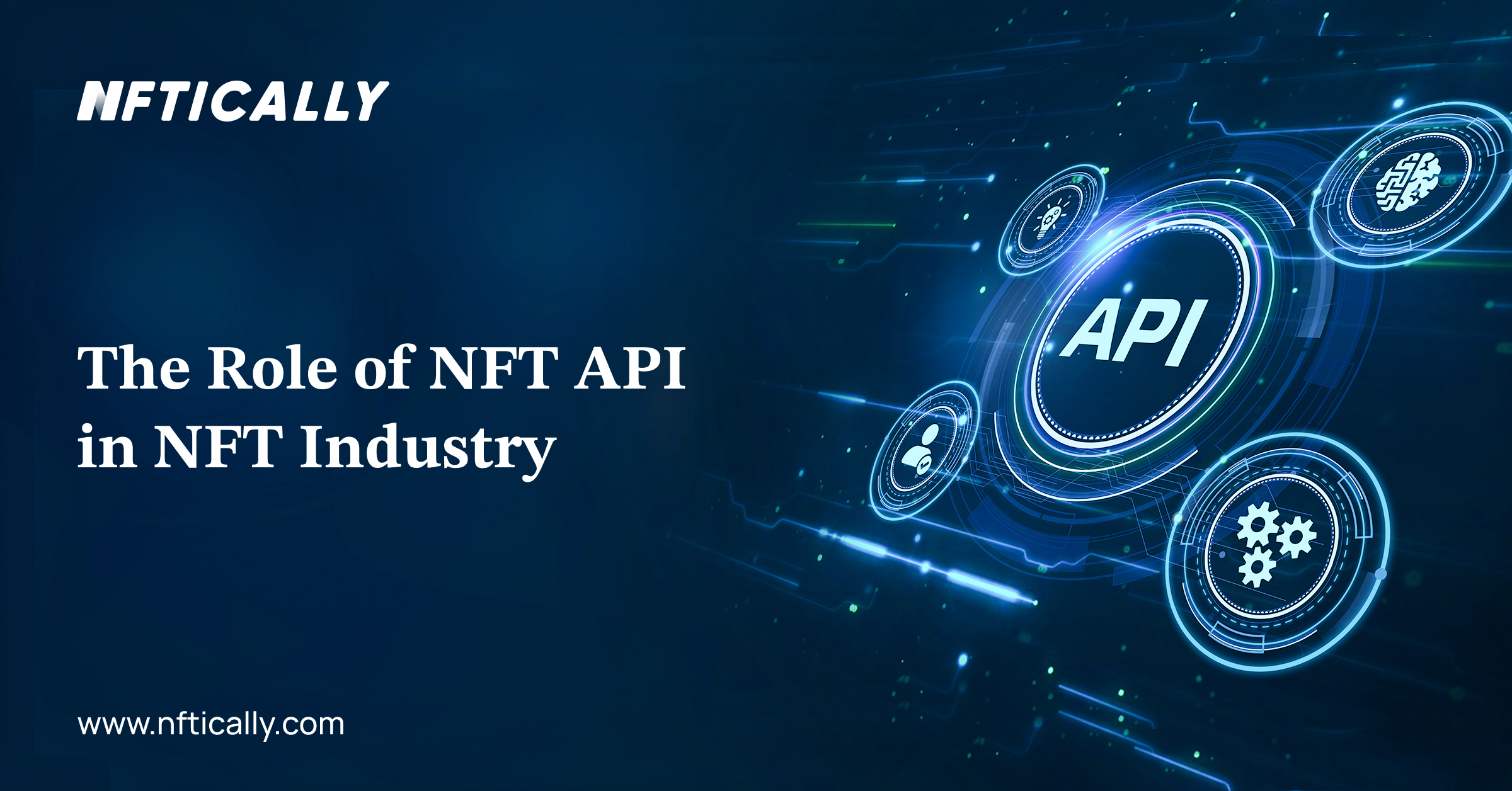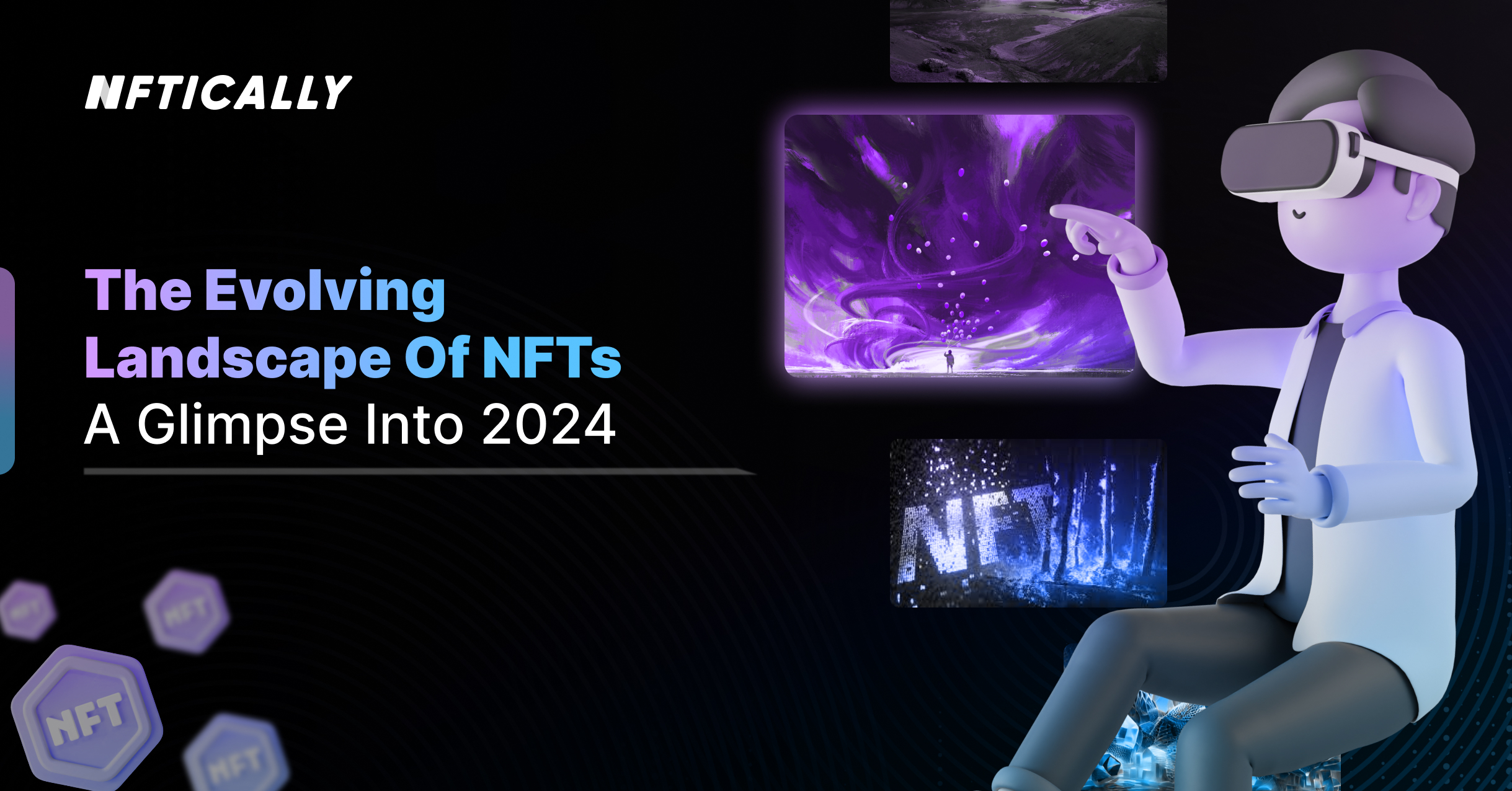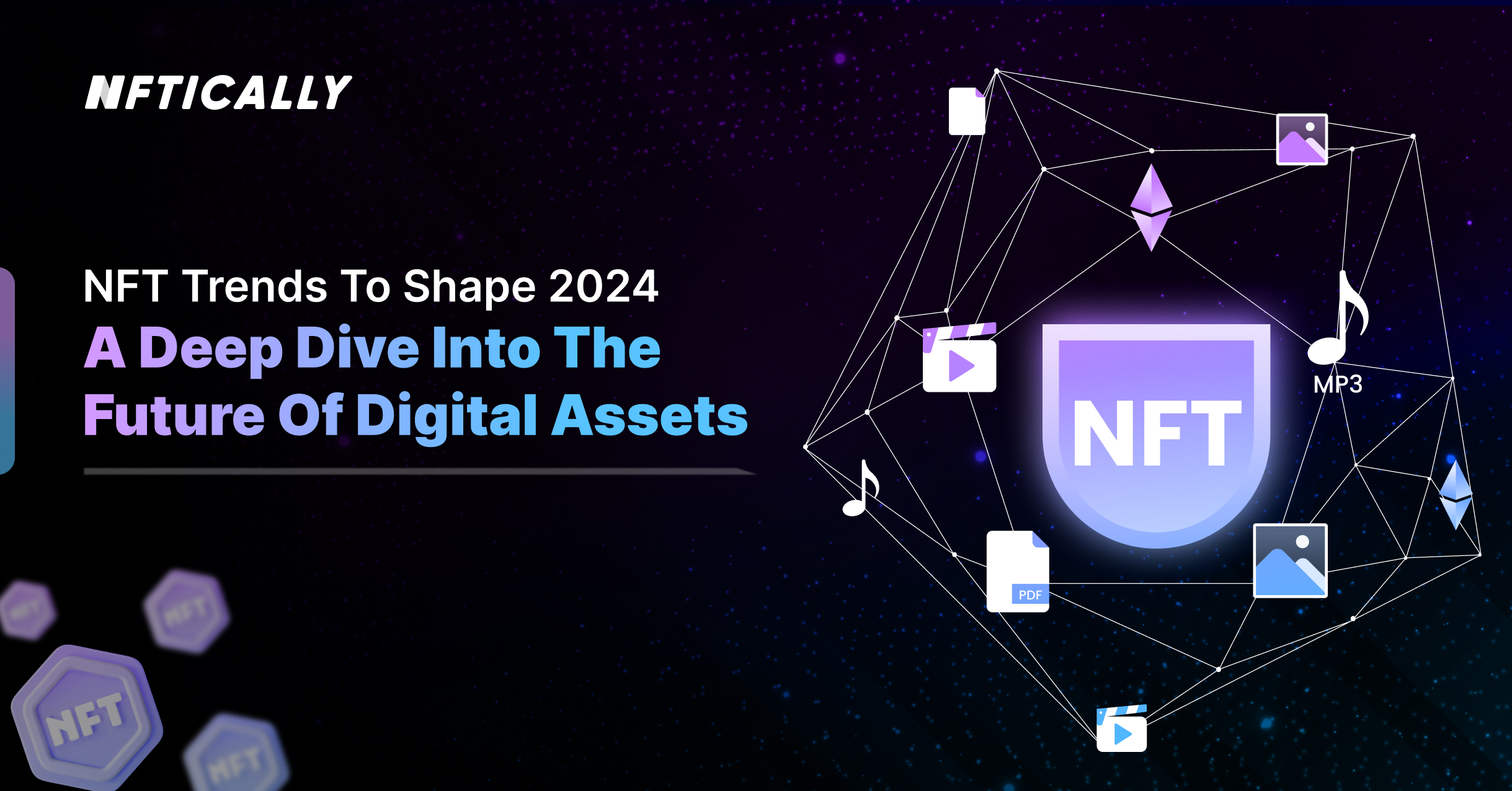- NFTs
- April 5, 2022
The Role of NFT API in NFT Industry

What is an Application Programming Interface (API)?
Application Programming Interface (API) is a software middleman that enables two apps to communicate with one another. You utilize an API every time you use an app like Facebook, send an instant message, or check the weather on your phone.
In a nutshell, how do APIs work?
In a nutshell, APIs allow you to provide access to your resources while preserving security and control. It is entirely up to you how and to whom you provide access. Good API management, which includes the usage of an API gateway, is the foundation of API security.
Connecting to APIs and developing apps that utilize the data or functionality offered by APIs are possible using a distributed integration platform that links everything—including legacy systems and the Internet of Things (IoT).
Overview of the NFT API
NFT API delivers resolved metadata for all NFT collections, users, and transactions. NFT API for cross-chain transactions.
The NFT API is a critical component of any NFT dapp. Whether you’re creating an NFT game, wallet, marketplace, analytics site, dashboard, or anything else based on NFTs, you’ll need a dependable NFT API to let you acquire things like:
- Metadata for NFT
- Data on NFT ownership
- NFT Data Transfer
- NFT Costs
Networks and Chains supported
The NFT API supports the following chains:
Ethereum (ETH)
Binance Smart Chain (BSC)
Polygon (MATIC)
Avalanche (AVAX)
Fantom (FTM)
Testnets
This API is widely utilized in the web3 sector, and it is used to power a number of well-known web3 applications.
The Role of NFT API in the NFT Industry
What is the practical use of APIs? Here’s an example of a standard API scenario: buying an NFT.
To buy an NFT, you must first interact with the NFT Marketplace website in order to access the NFTs database and determine which NFTs are available and how much they would cost.
You must have access to that information from the NFTs database, whether you interact with it through the website or a software tool that combines data from many NFTs. Alternatively, you may be using a mobile phone to obtain the information. You must get the report, which necessitates the application interacting with the NFTs API and gaining access to the NFTs data.
The following is a list of NFT API’s functional roles.
NFT Real-Time Data on Demand
Without filtering through individual smart contracts, the NFT API allows you to discover any NFT, verify ownership, and get transaction history and key collection information.
Making NFTs Searchable and Universally Accessible
Previously, developers had to parse individual smart contracts, sort through irregular data sets, and go through the time-consuming task of cleansing and stitching to extract insights about an NFT’s current owner, transaction history, and collection insights. NFT API Add-On normalizes this data, making it searchable and accessible, allowing anybody to query across several projects with a single request, saving time and money.
Large-chain support
The NFT API is an add-on functionality for the following blockchains that may be accessible using any API node plan:
- Ethereum: Ethereum is a community-run platform that powers the cryptocurrency ether (ETH) and hundreds of decentralized apps.
- Solana: Solana is a decentralized blockchain designed to allow the creation of scalable, user-friendly applications for the whole planet.
Verify the ownership of an NFT.
NFTs are continually changing hands, and projects that use NFTs need up-to-date data to validate ownership in real-time. Keeping track of this is crucial for any NFT project. Webhooks incorporated into NFT API Add-On enable applications to receive changes and transmit events automatically.
NFTs should be fetched and filtered.
Finding information proving the project a particular NFT belongs to, prior transaction history, and other valuable facts is vital for determining any item’s worth as the number of NFT projects and collections expands. NFT-focused initiatives must be able to draw this information from a wide range of sources across complicated networks.
NFTs may be found by creator.
Some well-known artists have many collections, and keeping track of these collections might be helpful in NFT projects to monitor and track automatically. With the NFT API Add-On, users may automatically get the individual token Addresses associated with a specific creator and details such as collection descriptions and the number of assets accessible in a collection at any given moment.
Also Read: How To Create a Successful NFT Project
Additional resources
While we’ve covered the fundamentals of APIs, their roles, and how they function, there’s still more to learn about NFTs! To discover more about NFTs, visit our blog.
If you want to understand more about NFTs, visit our blog section. You may also find out how to set up your own NFT Marketplace.
NFTICALLY, a Global B2B SaaS, enables you to establish your own white-label NFT shop or NFT Marketplace without any technical skills.
Related Posts

The Evolving Landscape of NFTs: A Glimpse into 2024
Introduction As we stride into 2024, the captivating world of Non-Fungible Tokens (NFTs) continues to redefine digital interactions, presenting new opportunities and reshaping how we perceive and engage with digital assets. Now, let’s take a…
- December 15, 2023

NFT Trends to Shape 2024: A Deep Dive into the Future of Digital Assets
As we approach the precipice of 2024, the world of Non-Fungible Tokens (NFTs) stands on the brink of revolutionary transformations.The anticipation is high for the trends that will redefine the NFT landscape in the coming…
- December 5, 2023
Recent Posts
- Revolutionizing AI Clones: Sunny Leone Teams Up with Kamoto.AI for an Unprecedented Debut
- The Evolving Landscape of NFTs: A Glimpse into 2024
- NFT Trends to Shape 2024: A Deep Dive into the Future of Digital Assets
- The Gaming Revolution: NFTs Level Up the Player Experience
- NFTs and Intellectual Property Rights: Navigating Legal and Ethical Challenges
Recent Comments
Archives
- January 2024
- December 2023
- November 2023
- October 2023
- September 2023
- August 2023
- July 2023
- June 2023
- May 2023
- April 2023
- March 2023
- February 2023
- January 2023
- December 2022
- November 2022
- October 2022
- September 2022
- August 2022
- July 2022
- June 2022
- May 2022
- April 2022
- March 2022
- February 2022
- January 2022
- December 2021
- November 2021
- October 2021
- September 2021
- August 2021
- July 2021
Categories
- $ECOM
- 3D NFTs
- AI Characters
- Airdrpos
- Bitcoin
- Blockchain
- Blockchain Technology
- Buy NFTs
- Buying
- Crypto Collectibles
- Crypto Wallet
- Cryptocurrency
- Cryto Mining
- Digital Art
- Digital Assets
- Ethereum
- FAQs
- Features
- Generative Art Nfts
- ICO
- Invest in NFT
- Learn
- Metavatars
- Metaverse
- Minting
- NFT
- NFT 2.0
- NFT Art
- NFT Art Finance
- Nft auction
- NFT Communities
- NFT Crypto
- NFT crypto art
- NFT Drops
- NFT Games
- NFT gaming
- NFT Marketplace
- NFT Memes
- nft project
- NFT Royalties
- NFT Staking
- nft stocks
- NFT Store
- NFT Taxes
- NFT Trading Cards
- NFT Wallet
- NFTICALLY
- NFTs
- Non fungible tokens
- Non Fungile Tokens
- Ordinal NFTs
- Physical Assets
- Press Release
- Selling
- Solution
- Stablecoins
- Store
- Tensor Nfts
- Top Cryptocurrencies
- Uncategorized
- Web 2.0
- Web 3.0
- white label nft marketplace

